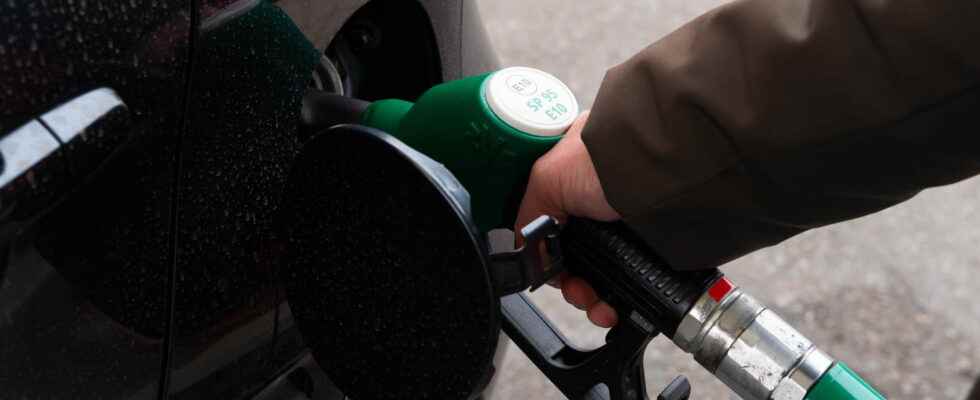PRICE OF PETROL. The discount of 15 cents (18 cents in mainland France) per liter of fuel began this Friday, April 1 and for 4 months. However, prices will continue to differ depending on oil prices but also on each station. How can you be sure to find the best price? Here are a few tips.
[Mis à jour le 1er avril 2022 à 16h36] The discount of 15 centimes per liter of fuel, promised by the government in mid-March, came into force on April 1, 2022 for a period of 4 months. Good news for motorists, it will finally be 18 cents in mainland France. Enough to lower the price of a full tank of gas by around 11 euros.
This price action, however, does not mean that the price will be the same everywhere, far from it. Some actors add a little boost. The TotalEnergies group, for example, indicated that it would add an additional 10 cents discount on the liter of fuel, diesel as well as gasoline. What to lower the note a little and compete with the actors of the large distribution, Carrefour, Auchan or Leclerc having announced several promotions in recent days.
It will therefore still be necessary to compare, especially since some small stations may have to wait a few days to empty their stocks paid for at the high price before applying the discount once the new stock at the reduced price has arrived at the gas pumps. The best thing is therefore to compare by looking at the prices displayed on the totems at the entrance or to use the comparison apps. This is the case of the Carbu.com site which displays the evolution of prices or the Mon Essence app which lists the prices charged near you.
In addition to moderating your travels, practicing carpooling if you can, the best thing is still to compare the prices charged in the service stations around your home. Tedious? Not that much since many sites offer this service on the internet. You can also base yourself on the official government site, combustible.gouv.fr, which offers to find the prices that must be indicated to the State by the managers of service stations. Linternaute.com has prepared a file showing you the prices department by department.
Our partner Essence&Co also offers this service via collaborative data provided by Internet users. You can find the search engine below. It is possible to compare fuel prices at service stations near you. Available on Android or iPhone, it offers daily fuel prices based on user feedback to indicate current prices.
The government websiteprice.fuel.gouv.fr” also offers you price statements by department and type of fuel (Be careful to clearly differentiate unleaded 95, 98 or E10). The price statements are updated on a weekly basis. What will help you find the cheapest gas stations through an interactive map listing the gas stations near you.
As you have noticed, there are sometimes sometimes substantial price differences depending on the service station: between distributor brands (supermarkets in particular) and oil group stations, the difference can sometimes seem significant. It is explained by various parameters including the brand image but also the famous additives. You may know them by their trade name. Excellium fuel, for example in the Total network, contains many additives. Incorporated into the fuel, they are used to improve its quality and therefore its performance. Also intended to protect the engine or the tank, they also act on the higher prices, which sometimes gives rise to controversy over their usefulness. Marketing argument used to justify these prices or real benefit for the car, the debate is lively.
What is the share of taxes in the price of gasoline at the pump? According to Total, taxes represent “the most important part of the price of fuel”. In 2018, according to the company, the taxes collected by the State represented for example “63% of the price of Unleaded 95-E10 and 60% of that of diesel”. Gasoline tax is in fact divided into two different taxes: VAT, and the domestic consumption tax on energy products (TICPE). There is also the general tax on polluting activities (TGAP). The TICPE is also higher on gasoline than on diesel. Depending on gasoline prices, the TICPE represents nearly 70 cents on gasoline, 60 cents on the price of a liter of diesel.
The carbon tax is a tax on CO2 emissions. It was implemented in 2014. It was to increase on January 1, 2019 and add 3 cents more to the price of a liter of diesel and 6 cents to the price of a liter of lead-free. Nothing happened: the government decided to cancel its increase when it could have brought 3.9 billion euros in additional revenue to the State. This decision follows the discontent of the yellow vests at the end of 2018. Note that the carbon tax, a component of the TICPE, finances only “very little” the ecological transition.
According to a Senate report on revenue for 2016, “out of the 4 billion euros of additional revenue expected from the carbon component in 2016, 3 billion euros are returned to companies under the tax credit for Competitiveness and Employment (CICE), and 1 billion euros for households, through reduced VAT rates applicable to energy renovation work on housing and in favor of social housing and intermediate housing”. For the Senate, the increase in the carbon tax therefore results from a “logic of budgetary return” and is not particularly used to finance the ecological transition.
